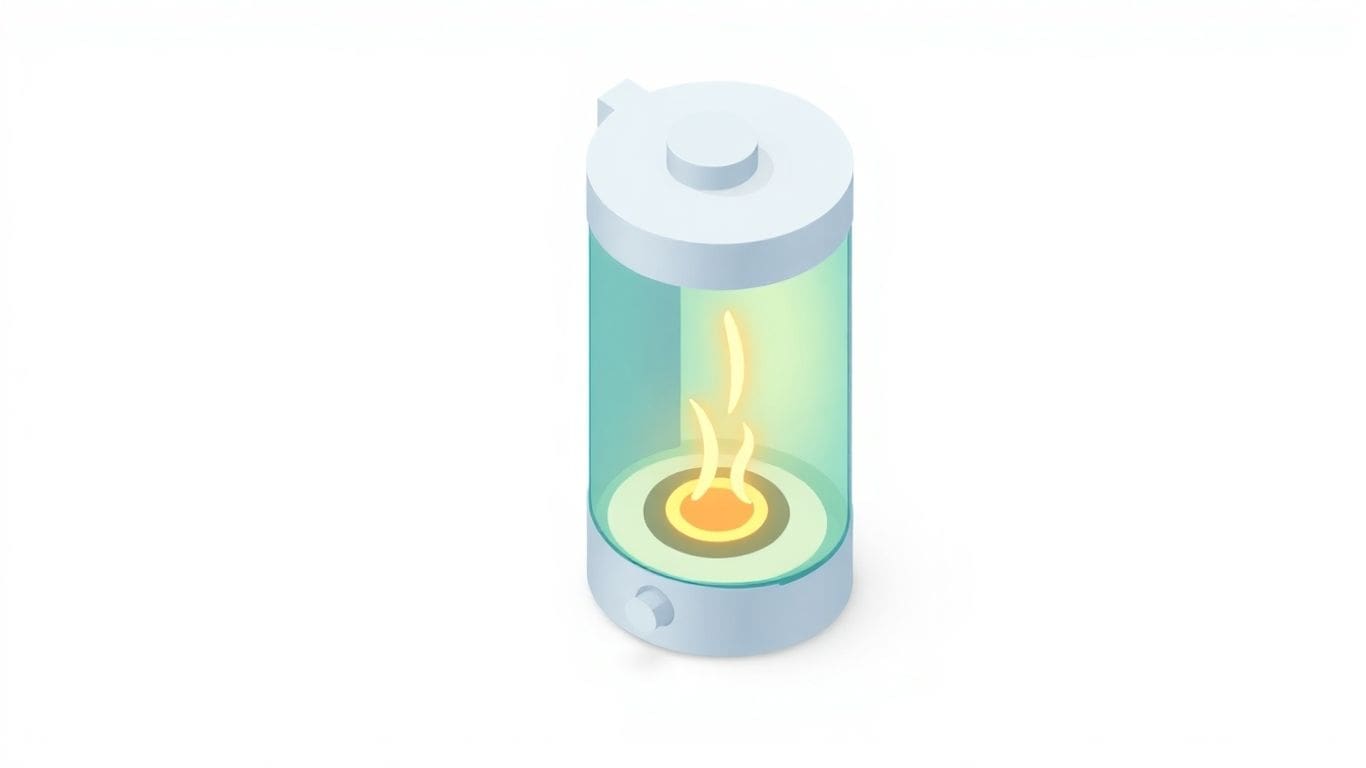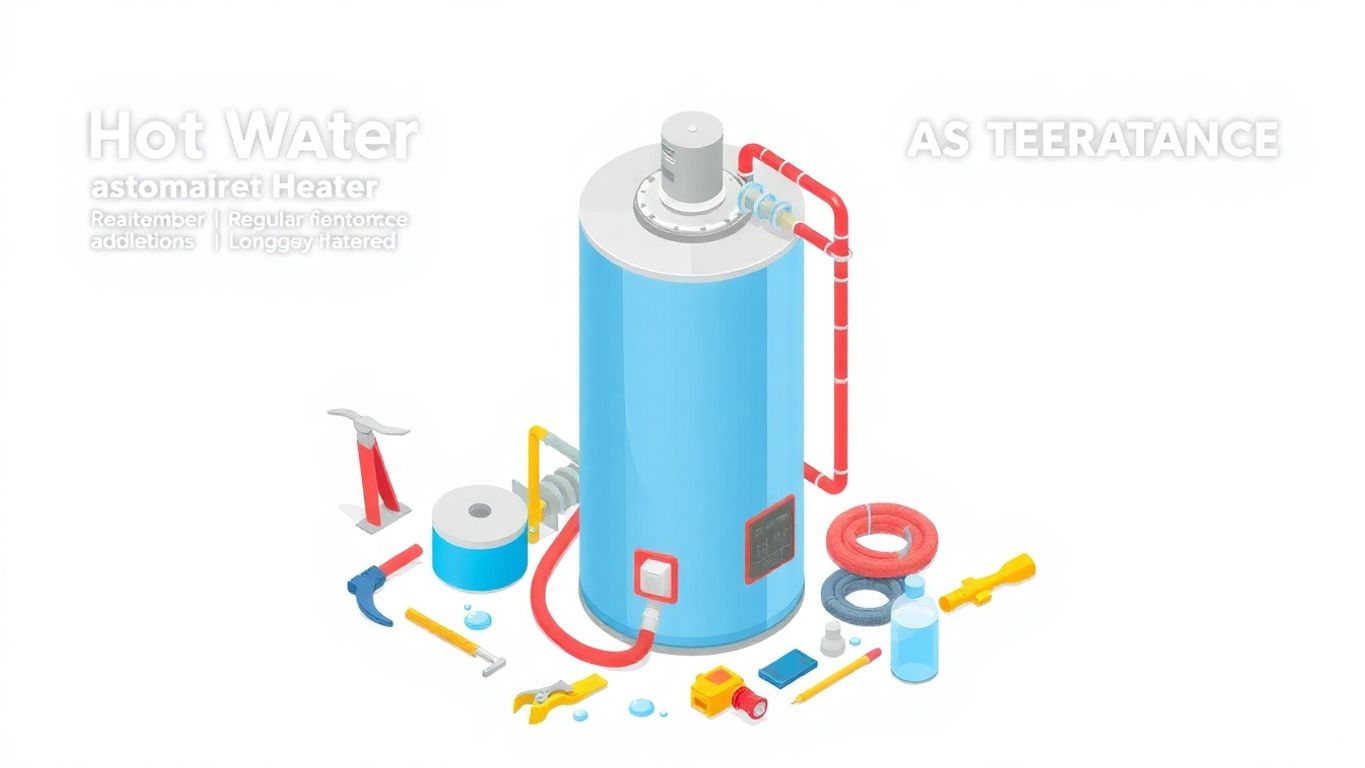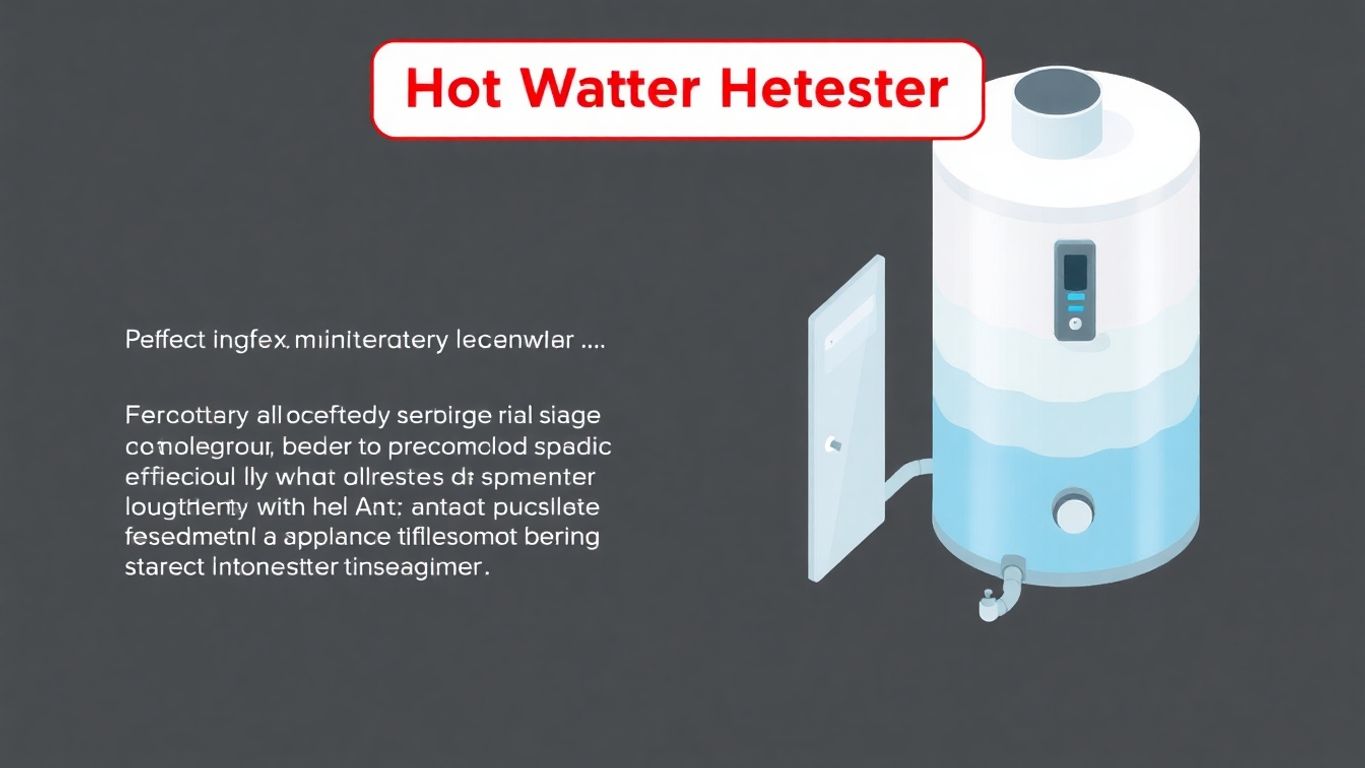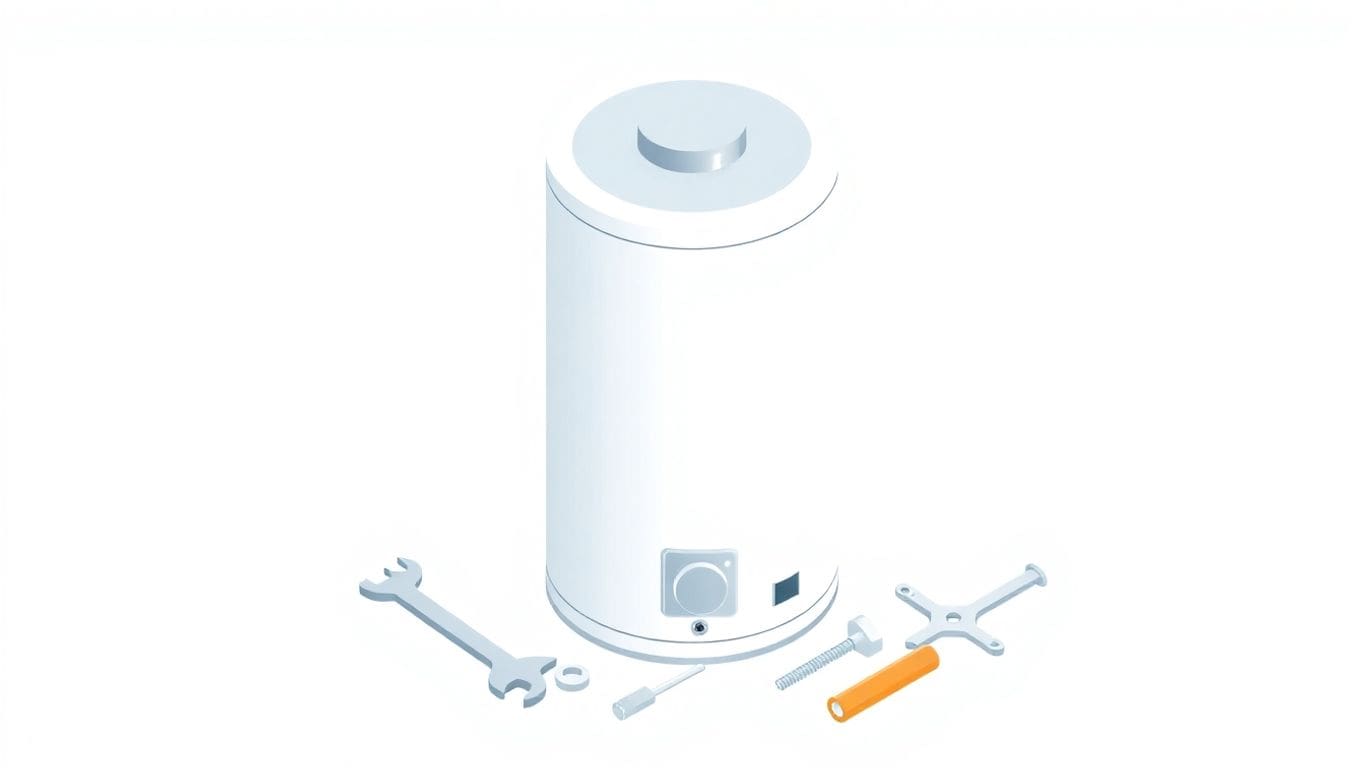
Maintaining your hot water heater is crucial for its efficiency and longevity. Regular upkeep not only ensures you have hot water when you need it but also helps you avoid costly repairs down the line. In this article, we’ll cover the basics of water heater maintenance, the benefits of staying on top of it, and practical tips to keep your unit running smoothly. Let’s dive into how often to maintain a hot water heater and what steps you can take to extend its life.
Ever wonder how you get hot water on demand? Water heaters are actually pretty simple. They heat water and store it until you need it. Most use electricity or gas to warm the water. The hot water rises to the top of the tank and is piped to your faucets when you turn them on. Cold water then enters the tank to be heated, so you always have a supply ready. It’s like a big, insulated thermos for hot water!
You’ve got a few choices when it comes to water heaters. The most common are:
Knowing the type you have is important because each one needs slightly different care. For example, tankless heaters don’t need to be flushed like tank heaters do.
Why bother with water heater maintenance? Well, it’s like taking care of your car. If you don’t do it, things can go wrong. Regular maintenance helps your water heater run better and last longer. It can also save you money on your energy bill. Plus, it can prevent big problems like leaks or breakdowns. Think of it as an investment in your home’s comfort and your wallet!

Taking care of your water heater might seem like a chore, but it really pays off. Think of it like taking your car in for an oil change. It keeps things running smoothly and helps you avoid big problems down the road. Let’s look at why keeping up with your water heater is a smart move.
A well-maintained water heater uses less energy. When sediment builds up in your tank, your heater has to work harder to heat the water. This means higher energy bills. Regular maintenance, like flushing the tank, gets rid of that sediment. This helps your water heater work like it should, saving you money each month. It’s like making sure your car’s tires are properly inflated; it just runs better.
Regular check-ups can really extend how long your water heater lasts. Without maintenance, things like rust and sediment can cause parts to break down faster. By keeping up with maintenance, you can catch small problems before they turn into big, expensive ones. Think of it as preventative medicine for your water heater. You’ll get more years out of it, which saves you money in the long run.
No one wants to wake up to a cold shower or a flooded basement. Regular maintenance helps prevent these kinds of surprises. By checking things like the pressure relief valve and the heating element, you can spot potential problems early.
It’s much easier to fix a small issue than to deal with a major breakdown. Plus, avoiding breakdowns means you won’t have to suddenly replace your water heater, which can be a big expense. Regular maintenance gives you peace of mind, knowing your water heater is in good shape.
Taking care of your water heater can seem like a pain, but it’s worth it. Doing a few simple things regularly can keep it running well for longer. Plus, you’ll save money on energy bills and avoid big problems down the road. Let’s look at some easy steps you can take.
Flushing your water heater once a year is super important. Sediment, like sand and minerals, builds up in the tank over time. This stuff can make your water heater work harder and less efficiently. Flushing removes this sediment, helping your water heater run better and last longer.
Here’s how to do it:
If you have an electric water heater, it uses heating elements to warm the water. Over time, these elements can get covered in mineral deposits, which makes them less effective. You should check them every year or so.
The thermostat controls the temperature of the water in your tank. Setting it too high wastes energy and can be dangerous. Most experts recommend setting it to 120°F (49°C). This is hot enough for most uses but not so hot that it will scald you. Check your thermostat regularly to make sure it’s set correctly. You can save energy and money by keeping it at the right temperature.
Doing these simple things can really extend the life of your water heater and keep it running efficiently. It’s like giving your water heater a little TLC, and it will thank you for it!
Keeping up with your water heater can seem like a chore, but it’s worth it. Regular check-ups help your water heater work better and last longer. Let’s look at how to keep your water heater in top shape.
Think of this like taking your car to the mechanic. A pro can spot problems you might miss. They’ll check all the parts, flush the tank, and make sure everything is working right. Getting a professional to look at your water heater once a year is a good idea. They can also give you tips on how to keep it running smoothly.
You don’t need to be an expert to check on your water heater. Look for leaks, rust, or weird noises. Make sure the area around the heater is clear. Check the temperature and pressure relief valve (we’ll talk about that later). If you see something that doesn’t look right, it’s time to call a pro. Regularly looking at your water heater can help you catch small problems before they become big ones.
Keep a record of when you had your water heater checked, what was done, and any problems that were found. This will help you keep track of its history and know when it’s time for another check-up. It’s also helpful if you ever need to make a warranty claim.
Think of your maintenance records like a health journal for your water heater. Write down when you flushed it, when you had it serviced, and any issues you noticed. This helps you and any future technicians understand its history and keep it running well.
Your water heater has safety features to keep you safe. It’s important to check these often. This helps prevent accidents and keeps your water heater working well.
Safety valves are super important. They stop too much pressure from building up in your water heater. If the pressure gets too high, it could be dangerous. You should look at the safety valves at least twice a year. Check for any signs of leaks or damage. If you see anything wrong, get it fixed right away. A broken safety valve could cause big problems.
The pressure relief valve, or PRV, is a key safety part. It lets out extra pressure to stop the tank from exploding. To test it, put a bucket under the discharge pipe. Then, lift the handle on the valve to let some water out. If no water comes out, or if the valve keeps leaking after you test it, you might need a new one. A working valve is very important for your safety. If it seems bad, call a professional plumber.
Your water heater’s temperature setting matters a lot. Setting it too high can waste energy and even burn you. The U.S. Environmental Protection Agency (EPA) says 120°F is a good temperature. It’s hot enough for most uses but not too hot to be dangerous.
Make sure you know how to change the temperature on your water heater. Check the owner’s manual for instructions. If you’re not sure, ask a professional to help. This will help you avoid accidents and save energy. Also, keep kids away from the water heater to prevent them from changing the settings.

Sediment buildup is a common problem in water heaters. It happens when minerals in the water settle at the bottom of the tank. This can make your water heater work harder and be less efficient. Let’s look at how to manage sediment buildup to keep your water heater running well.
Sediment comes from the minerals in your water. Over time, these minerals settle at the bottom of your water heater tank. Hard water, which has a lot of minerals, can cause sediment to build up faster. The type of pipes you have can also affect how much sediment you get. Sediment buildup can reduce the efficiency of your water heater.
Flushing your water heater gets rid of sediment. Here’s how to do it:
Flushing your water heater once a year can help prevent sediment buildup and keep your water heater working well.
Here are some signs that you might have sediment buildup:
If you notice these signs, it’s a good idea to flush your water heater. This will help it work better and last longer.
It’s easy to forget about the water quality going into your water heater, but it really matters! The type of water you use can affect how well your water heater works and how long it lasts. Let’s look at some ways to keep your water in good shape.
If you live where the water is hard, you might want to think about getting a water softener. Hard water has lots of minerals in it, like calcium and magnesium. These minerals can build up inside your water heater, making it less efficient. A water softener removes these minerals, which helps your water heater work better and last longer.
It’s a good idea to test your water every so often. You can buy a kit at the store or hire someone to do it for you. Testing your water can tell you if there are any problems, like too many minerals or harmful stuff in it. If you know what’s in your water, you can take steps to fix it.
Corrosion is like rust, and it can damage your water heater. It happens when the water is too acidic. Here are some ways to prevent corrosion:
Keeping your water clean is a big part of taking care of your water heater. By using a water softener, testing your water, and preventing corrosion, you can help your water heater last longer and work better.
Want to save money and energy? Your water heater is a great place to start. Here’s how to make your water heater more efficient.
Did you know that the temperature setting on your water heater can make a big difference? Setting your water heater to 120°F (49°C) is usually best. This gives you enough hot water for most things while saving energy and preventing burns. Some people, especially those with older adults, might need a slightly higher setting of 140°F (60°C) to prevent bacteria growth. Always check your water heater’s manual for the best setting for your situation. Adjusting the temperature is easy. Usually, you just need a screwdriver to turn the thermostat behind a panel on the unit. After you change the setting, wait a few hours before checking the water temperature to make sure it worked. This small change can have a big impact on your energy consumption.
Insulating your water heater is like putting a cozy blanket on it. It keeps the heat inside, so your water heater doesn’t have to work as hard. You can buy a special insulation blanket for your water heater. Wrap it around the tank, and you could cut down on heat loss by up to 45%! This saves energy and money. Also, insulate the pipes that connect to your water heater. Use foam insulation for the pipes to keep the heat from escaping. This is a simple step that makes a big difference.
There are other ways to reduce heat loss from your water heater.
By taking these steps, you can save energy and money. You’ll also help your water heater last longer. It’s a win-win!
It’s important to know when your water heater isn’t working right. Catching problems early can save you money and trouble. Here’s what to look for.
Ignoring these signs can lead to bigger problems, like a complete water heater failure or water damage to your home.
Sometimes, you can fix small water heater problems yourself. But other times, it’s best to call a professional. Here are some situations where you should get help:
Leaks can cause a lot of damage, so it’s important to take steps to prevent them. Here’s what you can do:
Sometimes, you can fix things yourself. Other times, it’s better to call a pro. Knowing the difference can save you money and stress. Let’s look at what you can handle and when to get help with your water heater.
There are some simple things you can do to keep your water heater in good shape. These tasks don’t need special tools or skills. Doing them regularly can help prevent bigger problems.
Some water heater problems are too big to handle on your own. Trying to fix them yourself could be dangerous or make things worse. It’s best to call a professional when you see these issues.
It’s always a good idea to call a professional if you’re not comfortable working on your water heater. They have the tools and knowledge to fix problems safely and correctly. Plus, they can spot potential issues before they become big problems.
Keeping your water heater in good shape doesn’t have to cost a lot. Here are some ways to save money on maintenance.
Knowing when to DIY and when to call a pro can help you keep your water heater running smoothly and save money in the long run.
Okay, so you know why keeping up with your water heater is important. Now, let’s talk about making a plan to actually do it. It’s not as hard as it sounds! Think of it like brushing your teeth – a little bit regularly keeps big problems away.
Once a year, you should do a more thorough check. This is the time to flush the tank, check the heating element, and really look for any signs of trouble. I usually mark it on my calendar so I don’t forget. It’s also a good time to look over your warranty, just in case.
Every month, take a few minutes to look at your water heater. Check for leaks around the tank and pipes. Listen for any weird noises. Make sure nothing is blocking the area around the heater. It only takes a few minutes, and it can save you from bigger headaches later.
Here’s a quick checklist:
Different seasons can bring different challenges for your water heater. In the winter, you might need to insulate your pipes to prevent freezing. In the summer, you might want to lower the temperature setting to save energy. Adjusting your maintenance routine to the season can help keep your water heater running smoothly all year long.
I like to think of seasonal maintenance as giving my water heater a little extra TLC when it needs it most. It’s like changing your clothes for the weather – you want to make sure you’re prepared for whatever comes your way.
Here’s a simple table to guide you:
| Season | Task |
|---|---|
| Spring | Check for corrosion. |
| Summer | Lower temperature setting. |
| Fall | Flush the tank. |
| Winter | Insulate pipes. |
You should flush your water heater at least once a year to remove sediment buildup.
Look for signs like strange noises, leaks, or inconsistent water temperature.
Yes, you can perform basic tasks like flushing the tank and checking the thermostat.
Call a professional if you notice major leaks, rust, or if the heater isn’t working at all.
It’s best to set your water heater to around 120 degrees Fahrenheit for safety and efficiency.
You can improve efficiency by insulating the heater and pipes, and by setting the right temperature.
Neglecting maintenance can lead to breakdowns, higher energy bills, and a shorter lifespan for the unit.
Yes, a professional can spot issues you might miss and ensure your water heater runs efficiently.



